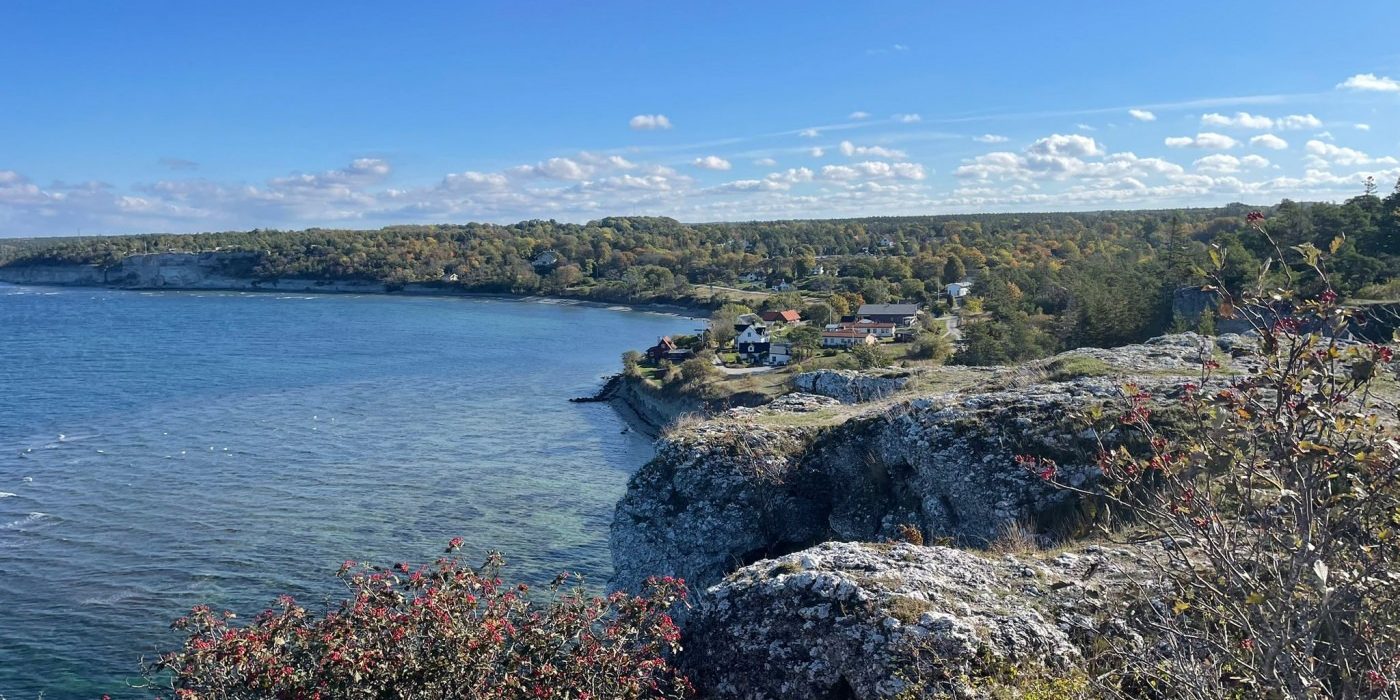Year Abroad: A Trip to Gotland
Of the many Swedish islands I’ve visited while on my year abroad, none have quite impressed me as much as Gotland, Sweden’s largest island located in the centre of the Baltic Sea. I signed up to this trip with ESN Gothenburg (Erasmus Student Network) and spent the entire weekend exploring the island. Here’s how it went…
This place is a national treasure of Gotland, being one of the best-preserved medieval towns in Scandinavia.
Our journey started in Stockholm where ESN students from the Universities of Gothenburg (me), Linköping, and Stockholm all met to begin our journey. After filling up an entire coach with our luggage and ourselves, we set off towards Nynäshamn to catch the ferry. As we pulled into the harbour, we were met with a giant herd of children, all of whom were taking our ferry to Gotland to compete in a gymnastics competition. This meant our three-hour journey to the island was very loud and full of energetic chatter…not the quietest three hours of my life.
When we arrived, we were greeted by Jan, a local tour guide of the town of Visby. This place is a national treasure of Gotland, being one of the best-preserved medieval towns in Scandinavia. During the tour, I was able to take many pictures of the streets, houses, and impressive medieval city walls. The town’s walls were built in the 13th century and are about 3.4km long. Visby is a UNESCO World Heritage site where you’ll find ruins of medieval churches and beautiful rose gardens. During the summer, the town hosts ‘Medieval Week,’ where you are expected to dress up in period costumes and engage in jousting tournaments, and other events that celebrate the town’s medieval heritage. However, we were lucky enough to experience the town in its peaceful, autumn period, so were very appreciative of the quiet streets.
We were all allocated cabins and spent the evening cooking our group meals.
Next up, we drove to our accommodation located right next to the coast. We were all allocated cabins and spent the evening cooking our group meals. My cabin went with a classic pizza-making night where we all introduced ourselves to each other before wandering down to the beach-front and finishing the day with some stargazing.
We were up bright and early the next morning to set off on a daytrip to Fårö, a much smaller island just north of Gotland. The island is separated from Gotland by the narrow Fårö-strait, and connected by two car ferries, one of which we had to cross on our coach. Our first stop was the English Cemetery, a grave in Ryssnäs which contains the remains of 20 British sailors of the Royal Navy – Fårö served as a British navy base during the Crimean War. Our next stop was the medieval Fårö Church, parts of which were built in the 14th century. Almost the entire nave and tower are medieval, but the church has lost much of its original look through subsequent reconstructions. In the church cemetery, we were pointed in the direction of the grave of film-maker Ingmar Bergman who lived and died on Fårö with several of his films being filmed on the island. Next up, we hiked 5km along the island’s northeastern beach with our end destination being Fårö lighthouse, a 30-metre-high building built between 1846 and 1847. Our final stop of the trip was the Blå Lagunen (the Blue Lagoon), where the bravest of our group decided to have a brief swim.
It truly felt like we had been dropped off in the middle of nowhere, almost like the middle of an apocalypse.
It was yet again a very early start the next morning for our final day of the trip. We started the day with a peaceful walk along Ekstakusten, located on the Western coast of Gotland. It offered views of the Baltic Sea and nearby Karlsö Islands (Lilla and Stora Karlsö). With its sparse vegetation, it truly felt like we had been dropped off in the middle of nowhere, almost like the middle of an apocalypse. The area was also dotted with a few fishing huts and remnants of old coastal villages which added a historical element to our relaxing walk. Next up, was Högklint, one of Gotland’s most stunning viewpoints. Being about 48 meters above sea level, it offered great views of the Baltic Sea, with the coastline and medieval town of Visby in the distance.
Our day ended where it all began, back in the town of Visby where we were given three hours free time to explore. My group stopped by a café for a break, wandered through the shops, took photos of the streets, and finally made our way down to the coast to catch the ferry back. To our delight, we were once again sharing our journey with the kids from the gymnastics competition, all of whom had medals round their necks and energy levels ten times higher than before.
From exploring the medieval streets of Visby to hiking along coastlines and visiting historic landmarks, Gotland proved to be a great choice for a weekend trip. Thanks to ESN Gothenburg for such a well-organised adventure.

Comments (1)
This sounds amazing and you have described it beautifully! Will have to give it a visit 🙂